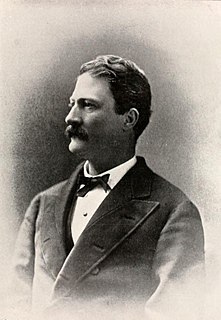
George Washington Custis Lee, also known as Custis Lee, was the eldest son of Robert E. Lee and Mary Anna Custis Lee. His grandfather George Washington Custis was the step-grandson and adopted son of George Washington and grandson of Martha Custis Washington. He served as a Confederate general in the American Civil War, primarily as an aide-de-camp to President Jefferson Davis, and succeeded his father as president of Washington and Lee University in Lexington, Virginia.

William Fitzhugh was an American planter, legislator and patriot during the American Revolutionary War who served as a delegate to the Continental Congress for Virginia in 1779, as well as many terms in the House of Burgesses and both houses of the Virginia General Assembly following the Commonwealth's formation. His Stafford County home, Chatham Manor, is on the National Register for Historic Places and serves as the National Park Service Headquarters for the Fredericksburg and Spotsylvania National Military Park.

William Henry Fitzhugh Lee, known as Rooney Lee or W. H. F. Lee, was the second son of General Robert E. Lee and Mary Anna Custis. He was a planter, a Confederate cavalry General in the American Civil War, and later a Democratic Congressman from Virginia.

Arlington House, The Robert E. Lee Memorial, formerly named the Custis-Lee Mansion, is a Greek Revival style mansion located in Arlington, Virginia, United States, that was once the home of Confederate Army General Robert E. Lee. It overlooks the Potomac River and the National Mall in Washington, D.C. During the American Civil War, the grounds of the mansion were selected as the site of Arlington National Cemetery, in part to ensure that Lee would never again be able to return to his home. The United States has since designated the mansion as a National Memorial. Although the United States Department of the Army controls Arlington National Cemetery, the National Park Service, a component of the United States Department of the Interior, administers Arlington House.
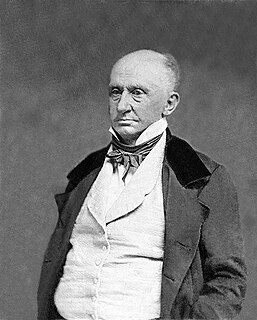
George Washington Parke Custis was an American plantation owner, antiquarian, author, and playwright. His father John Parke Custis was the stepson of George Washington. He and his sister Eleanor grew up at Mount Vernon and in the Washington presidential household.

Mary Anna Randolph Custis Lee was an American writer. She was the great-granddaughter of Martha Custis Washington, step-great-granddaughter of George Washington, and daughter of George Washington Custis. She was also wife of Robert E. Lee, the prominent career military officer who commanded the Confederate Army of Northern Virginia during the American Civil War. They married at her parents' home, Arlington House, in Virginia in 1831, and had seven children together; he predeceased her by three years.
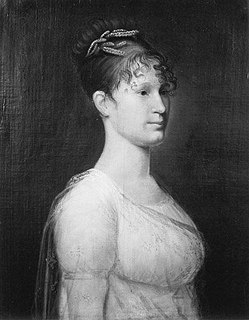
Mary Lee "Molly" Fitzhugh Custis was an Episcopal lay leader in Alexandria County. She was the mother of Mary Anna Randolph Custis who was the wife of Robert E. Lee. Early in the 1820s, Molly Custis helped form a coalition of women who hoped to eradicate slavery.
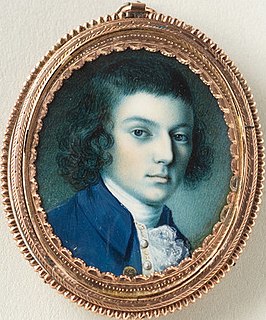
John Parke Custis was an American planter. He was the son of Martha Washington and stepson of George Washington.

Robert Edward "Rob" Lee Jr. was the sixth of seven children of Confederate General Robert E. Lee and Mary Anna Randolph Custis. He became a soldier during the American Civil War, and later was a planter, businessman, and author.
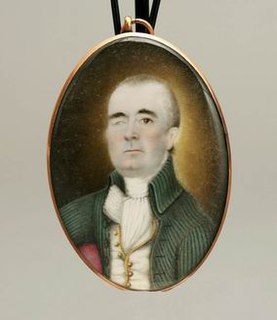
William Henry Fitzhugh was Virginia planter and politician who served in both houses of the Virginia General Assembly, as well as in the Virginia constitutional convention of 1829–1830 and as an officer of the American Colonization Society.

Ossian Hall was an 18th-century plantation house in Annandale, Fairfax County, Virginia. Ossian Hall was one of three large residences, along with Oak Hill, and Ravensworth, owned by the Fitzhugh family in Fairfax County.

Eleanor Calvert Custis Stuart, born Eleanor Calvert, was a prominent member of the wealthy Calvert family of Maryland. Upon her marriage to John Parke Custis, she became the daughter-in-law of Martha Dandridge Custis Washington and the stepdaughter-in-law of George Washington. Her portrait hangs today at Mount Airy Mansion in Rosaryville State Park, Maryland.

The White House was a late 17th-century plantation on the Pamunkey River near White House in New Kent County, Virginia. There were a total of three White Houses all built on the original pre-1700 foundation. The original White House Mansion was built by Colonel John Lightfoot III just before 1700 and while he was Counselor of State.
Nicholas Battalle Fitzhugh was a Virginia lawyer and politician who became a United States Circuit Judge of the United States Circuit Court of the District of Columbia after representing Fairfax County in the Virginia House of Delegates.
Edward Parke Custis Lewis was a Confederate Army colonel, lawyer, legislator, and diplomat who served as United States Minister to Portugal from 1885 to 1889.

Kings Park is a census-designated place (CDP) in the eastern United States in Fairfax County, Virginia, southwest of Washington D.C. The population as of the 2010 census was 4,333.
Anne Hill Carter Lee was the First Lady of Virginia from 1791 to 1794 as the wife of the ninth governor, Henry Lee III. She was the mother of the general-in-chief of the Confederate States of America, Robert E. Lee. As a separated wife and then as a widow, she was the head of her household at Lee Corner, Alexandria, Virginia, in what is now known as the Robert E. Lee Boyhood Home. Her chronic pain and straitened circumstances play a significant role in her son Robert's biography.

Mildred Childe Lee was an American society hostess and the youngest child of Robert E. Lee and Mary Anna Custis Lee. She was the last member of the Lee family to be born at Arlington Plantation and had a privileged upbringing typical of members of the planter class, attending boarding schools in Winchester, Virginia and Raleigh, North Carolina. A favorite of her father's, she was doted upon and given the nickname "Precious Life", often being referred to by this nickname in family letters. During the American Civil War, she sewed clothing for soldiers of the Confederate States Army and volunteered as a nurse in Confederate hospitals. Lee never married or had children, instead devoting her time to caring for her parents in their later years. After her father's death, she assisted her brother, George Washington Custis Lee, as hostess while he served as president of Washington College.

Anne Carter Lee was the fourth child and second daughter of General Robert E. Lee and Mary Anna Custis Lee. She grew up at Arlington House on her family's plantation. During the American Civil War, she stayed with relatives at Ravensworth Plantation and White House Plantation. She and her mother and sisters were placed under house arrest by Union troops in 1861 before being allowed to cross over Confederate lines to join her father in Richmond. Lee suffered from various health conditions throughout her life and died of typhoid fever at the age of twenty-three. She was buried in Warren County, North Carolina, where she died. In 1994, her body was interred at University Chapel of Washington and Lee University in Lexington, Virginia. The Anne Carter Lee Monument stands at her original gravesite in Warrenton.

Eleanor Agnes Lee was an American diarist and poet. The fifth child of General Robert E. Lee and Mary Anna Custis Lee, she was a member of the prominent Lee family of Virginia and was affectionately called "Wiggy" and "Agnes" by her parents. In her youth, Lee kept a diary about her life at Arlington Plantation. In 1984, her diary was published posthumously under the title Growing Up in the 1850s, and was considered one of the first detailed accounts the private lives of the Lee family at Arlington. Lee also wrote poetry, often in letters to her family, inspired by real-life events including the American Civil War, the death of her favorite sister, Anne Carter Lee, and the execution of her beau and cousin, William Orton Williams.




















